11 Best Hamstring Strengthening Exercises To Reduce Leg Pain
The best and most effective exercises to minimize pain and strengthen your hamstrings.
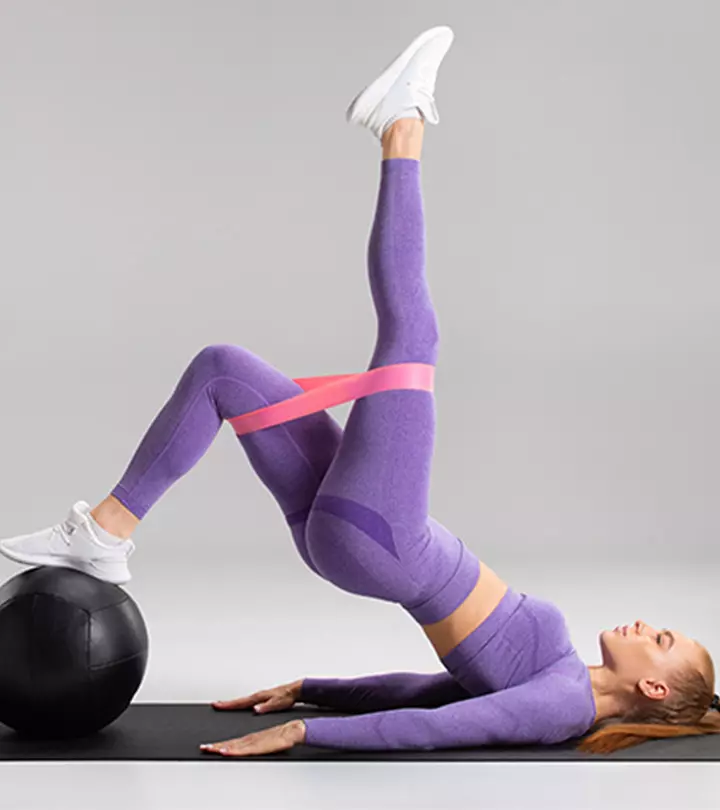
Image: Shutterstock
Hamstring strengthening exercises help reduce leg pain. Weak, pulled, torn, stiff, and inflamed hamstrings (tendinopathy) are common issues due to overuse, injury, or disuse. Along with rest and medications, you can get relief by doing physical therapy. Hamstring rehabilitation exercises help make the muscles strong and flexible. This reduces the risk of future injuries to the hamstring (1), (2). Start these exercises and stretches 4-6 weeks after the injury. Do the 11 best hamstring muscle strengthening exercises listed below to improve mobility, provide leg pain relief, walk, stand, and do your daily tasks without any hindrance. Read on!

 Workout Blueprint: Hamstring Strengthening Exercises
Workout Blueprint: Hamstring Strengthening Exercises- Frequency: Daily or as recommended by a physical therapist
- Benefits: Boost strength, improve mobility, and alleviate pain
- Equipment Needed: Chair, mat, exercise ball, and a foam roller
- Space Required: Big area for certain exercises
- Assistance Required: Yes, for certain exercises
- Who Should Avoid: Anyone with a history of back pain, spine problems, other bone conditions, or who has recently undergone surgery.
In This Article
11 Best Hamstring Strengthening Exercises
These hamstring recovery exercises are low-impact and can be done lying down or sitting. They will work not only the hamstrings but also your knees and glutes. This list also includes eccentric hamstring exercises great for hamstring rehabilitation and sports medicine. They help lengthen and relax the hamstring muscles.
Practice these exercises after consulting your doctor or under the supervision of a licensed physical therapist.
1. Extension Lag

Extension lags help strengthen the knee and hamstring muscles. You can do them sitting on the bed.
Steps
- Sit at the edge (approximately mid-thigh) of the bed. Do not let your legs touch the floor. Place your palms on the bed.
- Extend the injured leg as much as possible.
- Your physical therapist will assist in extending your leg further. Hold for 10 seconds and relax.
- Do this 10 times for 2-3 times a day.
2. Glute Bridge
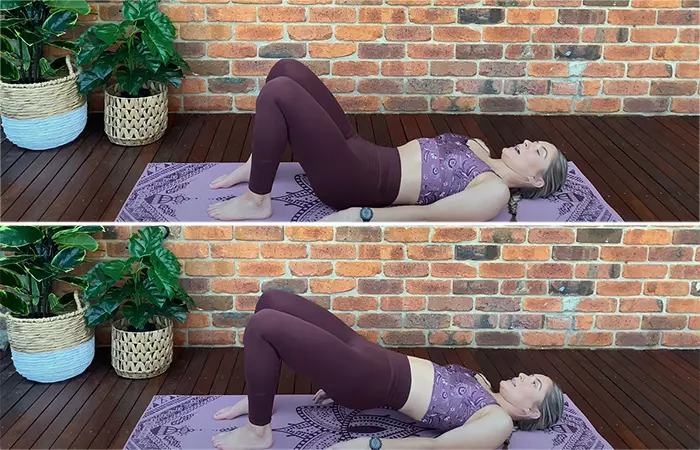
Glute bridge is an eccentric hamstring exercise that helps lengthen the hamstring muscles without causing overextension.
Steps
- Lie down on your back on a mat. Keep your feet shoulder-width apart with the knees bent, feet flat on the floor, and hands by your side.
- Push your hips up towards the ceiling. Stop when your thighs and hips are in the same line. Hold for 3-5 seconds. Keep breathing.
- Slowly bring your hips down.
- Push your hips up again before they touch the floor.
- Do 3 sets of 8 reps once or twice a day.
3. One-Legged Bridge
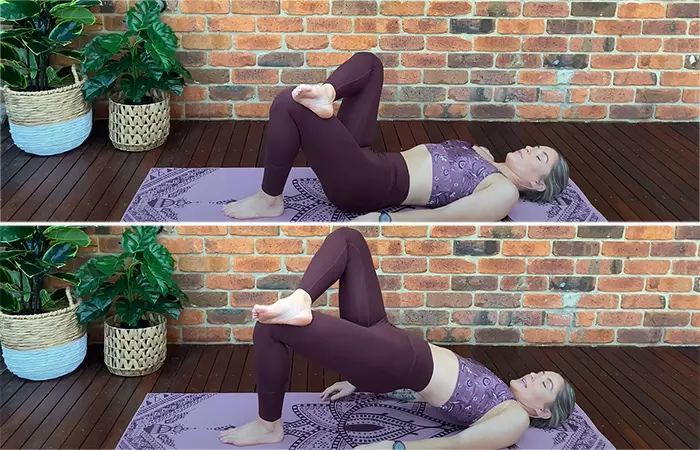
The one-legged bridge works on the hamstrings and glutes. You will support your injured leg on the other leg, which will help extend the hamstrings without strain.
Steps
- Lie down on your back on a mat with your knees bent and feet flat on the floor. Keep your feet hip-width apart and hands by your sides.
- Place your injured leg on top of the other leg, as shown in the image.
- Push your hips up toward the ceiling. Stop when your hips and thighs are in the same line.
- Hold for 3-5 seconds or even more if you feel comfortable. Keep breathing.
- Slowly bring your hips down.
- Push your hips up again before they touch the floor.
- Do 3 sets of 8 reps with each leg once or twice a day.
4. Prone Hamstring Curls

You can do the prone hamstring curls while lying on your bed, sofa, or any flat surface. You will need a pillow or a rolled towel for this exercise.
Steps
- Lie down on your belly and place your face on a pillow or rolled towel.
- Slowly lift your injured leg.
- Try to bring your foot closer to your glutes.
- Pause for a second and bring your leg back down.
- Do 3 sets of 8 reps twice a day.
5. Stretch For Tight Hamstrings
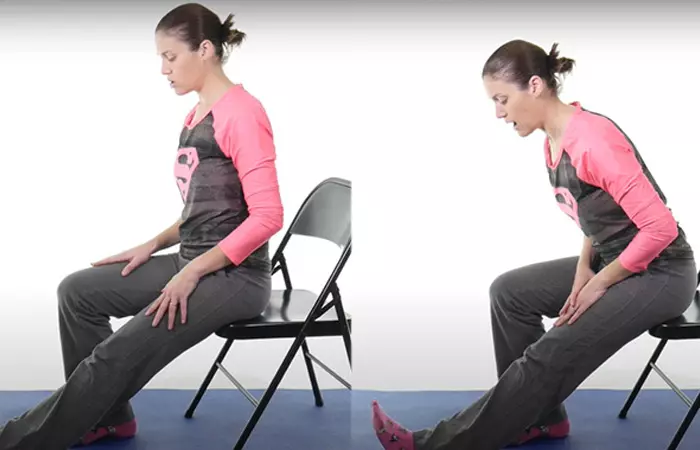
A tight hamstring can limit movement and cause pain while exercising or in daily activities. This stretch helps reduce stiffness and ease movements, especially if you are a dancer or a yoga enthusiast.
Steps
- Sit at the edge of a chair.
- Place your leg with the stiff hamstring forward. Flex your foot.
- Keep the other knee flexed and the foot flat on the floor.
- Slowly bend your body from the hips. You will start to feel the stretch in your hamstrings. Hold for three seconds.
- Bring your body back to an upright position.
- You can also continue the same stretch in a standing position if you are comfortable.
6. Lying Knee Extension
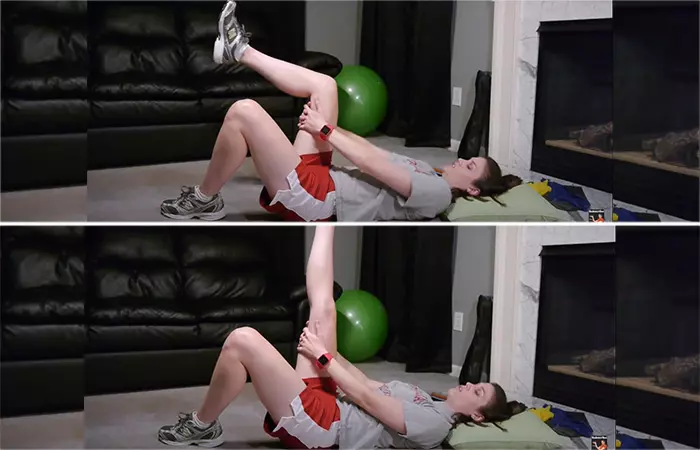
The lying hamstring stretch is a great way to improve hamstring flexibility and strength. Stretch as much as you can, but do not force a full stretch.
Steps
- Lie down on your back on a mat.
- Flex your knees and keep your feet flat on the floor.
- Lift your injured leg off the floor and lock your palms at the back of your thigh. Keep your knee flexed.
- Keep breathing and slowly lift your lower leg or shin up towards the ceiling. Stretch as much as you can.
- Hold for three seconds and lower your shin.
- Do it thrice daily.
7. Prone Hamstring Curls With A Band
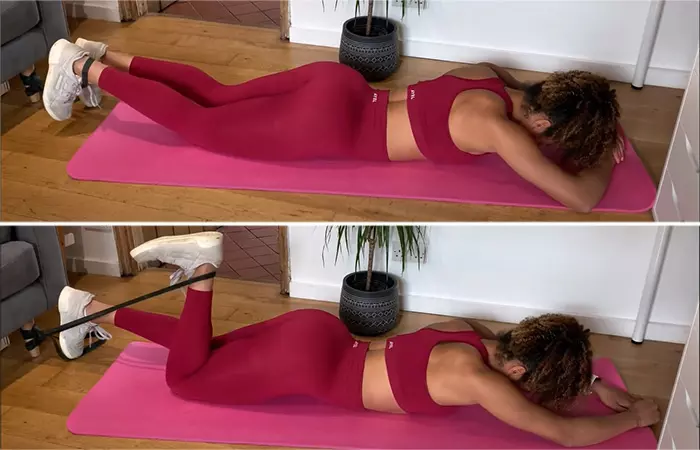
Resistance bands are great for strengthening the muscles, especially for lower body workouts. This exercise is the modified form of the hamstring curls. Do this only after you have gained considerable strength in your hamstrings.
Note: Avoid overdoing this exercise and use a light resistance band.
Steps
- Secure the resistance band to the base of a sofa or any sturdy object. Make a loop.
- Sit down comfortably on a mat on the floor and place your feet through the loop.
- Turn around and lie down on your belly.
- Bend your knee and lift your leg. Try to bring the ankle close to your hips. Do not stretch too much if it causes discomfort.
- Pause for a moment and slowly place your feet back in the extended position.
- Do 3 sets of 8 reps once a day.
8. Prone Knee Extension Hang
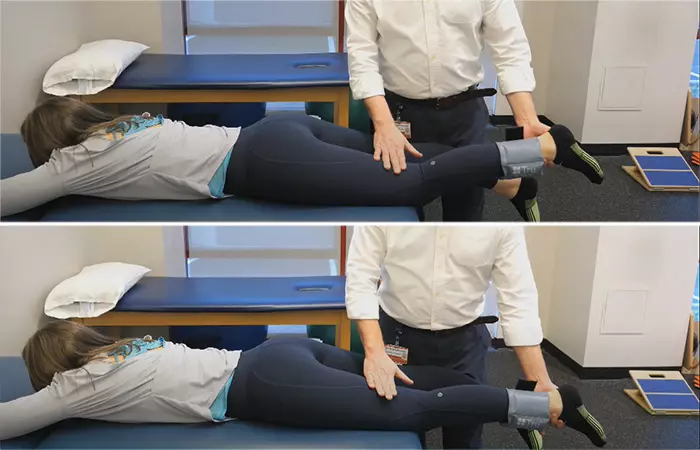
Prone knee extension works on your knee muscles to strengthen your hamstrings. You can perform this exercise on your bed or sofa. However, you will need the support of a licensed physical therapist to do this exercise.
Steps
- Lie on your bed or sofa on your belly. Make sure your knee cap is hanging over the edge of the bed or sofa.
- Your therapist will add weights to your ankle with doctor’s approval. You can also do this exercise without any ankle weights.
- Your physical therapist will hold your leg at a 20° or 30° angle and slowly allow it to fall to get to a fully extended position. Relax your hamstrings.
- Do this for 5 minutes thrice a day.
9. Hamstring Curl With Physio Ball
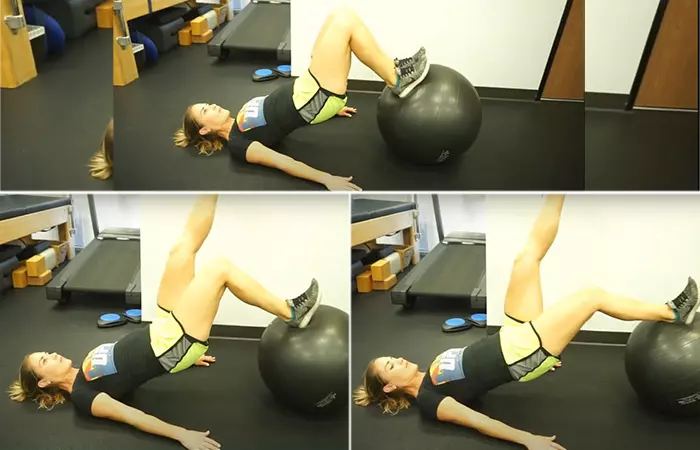
You will need a physioball to do this eccentric hamstring exercise.
Steps
- Lie on your back and place your feet on a physioball. Keep your hands on the sides and your palms flat on the floor.
- Lift your hips off the floor. This is the starting position.
- Curl in your legs to bring the physioball closer to your hips. The soles of your feet should be resting on the ball.
- Extend your right leg completely.
- Slowly roll back the physioball to the starting position and extend your left leg.
- Do this 3-5 times with each leg.
10. Hamstring Foam Rolling
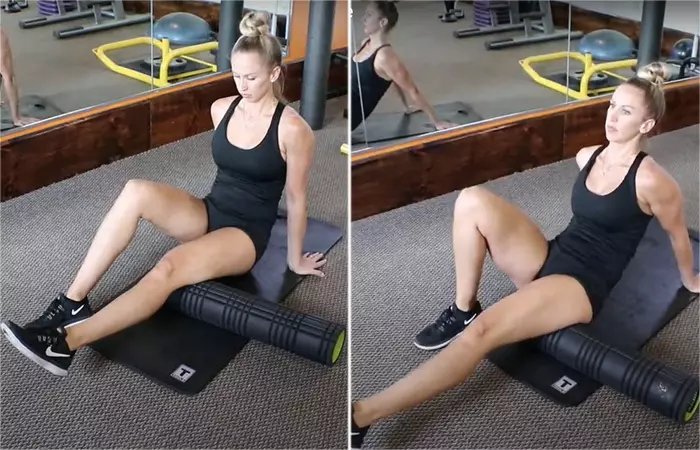
Foam rolling is a great way to reduce stiff hamstrings. If you have sore hamstring muscles after a workout session, use a foam roller to release the tension and prevent further damage.
A blogger shared their personal experience with hamstring tendinopathy and how foam rolling helped improve their flexibility. They said, “I have a foam roller (black; the color indicates how hard the roller is) and would roll out my hamstrings, quads, IT bands and glutes every single day for the first two or three months. I can now touch my toes at any point in the day, which is a huge accomplishment considering where I started (i).”
Steps
- Sit on a mat and extend your legs.
- Place the foam roller below your thighs.
- Move forward and backward to massage your hamstrings with the foam roller.
- Do this for 5 minutes.
11. Romanian Deadlift
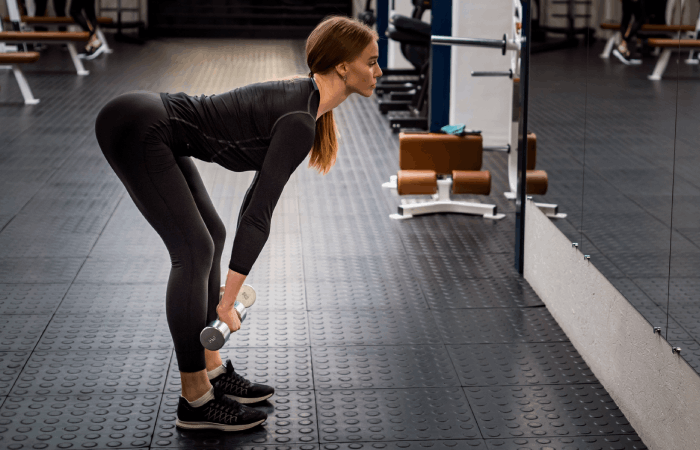
The Romanian deadlift mainly targets the hamstrings, glutes, and lower back. Doing it regularly helps strengthen the leg muscles and improves lower body stability.
Steps
- Stand straight, keeping your feet shoulder-width apart.
- Hold a pair of dumbbells or a barbell in front of your thighs with palms facing down.
- Keep your back straight and slowly lower the weights toward the ground by pushing your hips back.
- Your knees should have a slight bend, but they should not move forward.
- Lower the weights until you feel a stretch in your hamstrings.
- Keep the barbell or dumbbells close to your body throughout the movement.
- Push your hips forward and stand up straight, raising the weights back to the starting position.
- Squeeze your glutes at the top of the movement.
- Inhale as you lower the weights, and exhale as you raise the weights.
- Do this for 3-4 sets of 2-6 reps each.
Include these 11 exercises in your fitness routine to help strengthen your hamstrings, rehabilitate them, and aid in injury prevention. But what can cause injuries in the first place? Let’s find out in the following section.
Key Takeaways
- Hamstring strengthening exercises are the best way to make muscles flexible and strong.
- These exercises include a glute bridge, one-legged bridge, lying knee extension, and more.
- Overtraining, poor posture, not warming up are a few reasons for hamstring injuries.
- Improving posture, staying active, and warm-ups minimize the risk of an inflamed hamstring.
Common Causes Of Hamstring Injuries
- Not Warming Up – Prepping the muscles before cardio, strength, or flexibility training is crucial. Otherwise, you run the risk of injuries, especially if you are a runner, dancer, fitness enthusiast, or athlete. So take your sweet time to warm up your muscles. Find a corner and take at least 10 minutes to warm up.
- Overtraining – Many athletes and non-athletes are guilty of overtraining, which causes more muscle tears that do not get enough time to rebuild themselves. This results in muscle fatigue, inflammation, and injury to the hamstring (3).
- Poor Posture – A drooping spine or a slouched back can affect your hamstrings because it directly connects with the way you walk and sit. Therefore, a poor lumbar posture puts you at a higher risk of a hamstring injury (3).
- Low Bone Density – Aging reduces bone density, thereby increasing the risk of falls. Women are at a higher risk than men of sudden falls (4). This can cause not only fractures but also blunt trauma to the hamstrings.
Early detection of hamstring issues can help stop additional damage. Do not ignore symptoms like tightness, discomfort when doing things, and trouble straightening your leg. It is recommended to consult a healthcare professional if you encounter any of these troubles.
 Did You Know?
Did You Know?They say where there is a problem, there is prevention. Scroll down to find out how to prevent hamstring injuries.
Ways To Prevent Hamstring Injury
- Rest – If you have just had a hamstring injury, rest for at least 4-6 weeks. Hamstring tears and inflammations can become a life-long issue if you do not take enough rest and ice it in the initial days of the injury. Also, avoid overtraining.
- Warm Up – Always! Take 10 minutes to warm up your entire body. Do not just practice a few stretches and start performing a 30-60-minute workout. This will eventually make your muscles prone to injuries. Make it your golden rule to warm up even if you are late for the training.
- Improve Your Posture – This takes a lot of conscious effort and practice. Do you slouch? Sit up with your back straight. Do you walk with drooping shoulders? Roll your shoulders back, relax, and walk. You can add reminders, use notes, or even ask your close friends to remind you if you slouch or walk with drooped shoulders.
- Stay Active – You need to stay active irrespective of your age. Inactivity can lead to hamstring fatigue even after minimal daily activities. Go for short walks or indulge in brisk walking. You can also take up water exercises for a fun session.
- Incorporate Cross-Training Into Your Routine – You can balance muscle activation and reduce the chance of overuse injuries by incorporating a range of physical activities into your regimen. In addition to supporting your strength training, cross-training with exercises like yoga, cycling, or swimming improves your general fitness and allows your tired muscles to actively recover.
 Quick Tip
Quick TipInfographic: 4 Easy Exercises To Strengthen Hamstrings
There are a variety of hamstring exercises that can be done using just your body weight or with the use of external resistance such as barbells, dumbbells, or resistance bands, as shown above. But if you’re new to these exercises, picking some to try might be tough. The infographic below highlights some easy hamstring exercises. Take a look and consider incorporating them into your routine.
Some thing wrong with infographic shortcode. please verify shortcode syntaxHamstring overuse, sprain, or injury can lead to debilitating pain. In case you are struggling with the same, you can try any of the above-mentioned hamstring strengthening exercises to reduce leg pain. Ample amount of rest balanced with these exercises, would help you get some relief. Along with that, you should continue lighter daily activities like walking, sitting or standing without any support to improve the strength of your hamstrings. Consult with your doctor if things don’t seem to be improving over time.
Frequently Asked Questions
What are the signs of a hamstring strain?
Sudden discomfort in the back of the thigh, swelling, and trouble walking or straightening the leg are all symptoms of a hamstring strain. Bruising, soreness, and weakness of the muscles are additional typical signs that may require medical attention.
How often should I perform hamstring strengthening exercises?
It is recommended that hamstring strengthening exercises be done 2 to 3 times a week, with rest days in between to help in muscle recovery. It is important to pay attention to your body and prevent overtraining to lower the risk of injuries.
Do squats strengthen hamstrings?
Not significantly. Squats focus on strengthening your quads instead of hamstrings. However, they may improve your hamstring flexibility. You can try some bodyweight hamstring exercises like split squats and hamstring curls that are more advanced and use your body weight resistance to strengthen your hamstrings.
How do you know if your hamstrings are weak?
Test your hamstring strength by bending over and touching your toes. When your toes and fingers don’t meet, your hamstrings may be tight or weak.
Is cycling good for your hamstrings?
Yes. Cycling can strengthen and stretch your hamstrings.
Take a proactive approach to tackle knee and leg pain with this informative video below. Explore effective stretching techniques for your quadriceps and hamstrings, expertly presented with easy-to-follow instructions and valuable tips. So, check it out now!
Personal Experience: Source
StyleCraze's articles are interwoven with authentic personal narratives that provide depth and resonance to our content. Below are the sources of the personal accounts referenced in this article.
i. Dealing With High Hamstring Tendinopathy – A Practical Guidehttps://goldentrails.wordpress.com/2011/11/25/dealing-with-high-hamstring-tendinopathy-a-practical-guide/
References
Articles on StyleCraze are backed by verified information from peer-reviewed and academic research papers, reputed organizations, research institutions, and medical associations to ensure accuracy and relevance. Read our editorial policy to learn more.
- An Evidence-Based Framework for Strengthening Exercises to Prevent Hamstring Injury
https://pubmed.ncbi.nlm.nih.gov/29116573/ - Rehabilitation and return to sport after hamstring strain injury
https://www.ncbi.nlm.nih.gov/pmc/articles/PMC6189266/ - Hamstring injury rehabilitation and prevention of reinjury using lengthened state eccentric training: a new concept
https://www.ncbi.nlm.nih.gov/pmc/articles/PMC3362981/ - Patterns of Hamstring Muscle Tears in the General Population: A Systematic Review
https://www.ncbi.nlm.nih.gov/pmc/articles/PMC4856270/
Read full bio of Rakesh Rathod
Read full bio of Ravi Teja Tadimalla
Read full bio of Sindhu Koganti







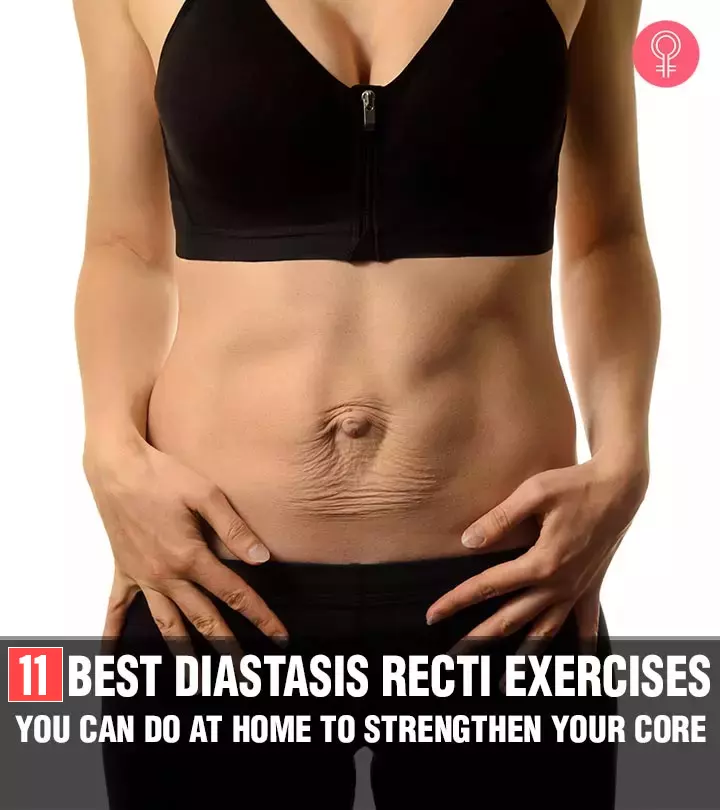



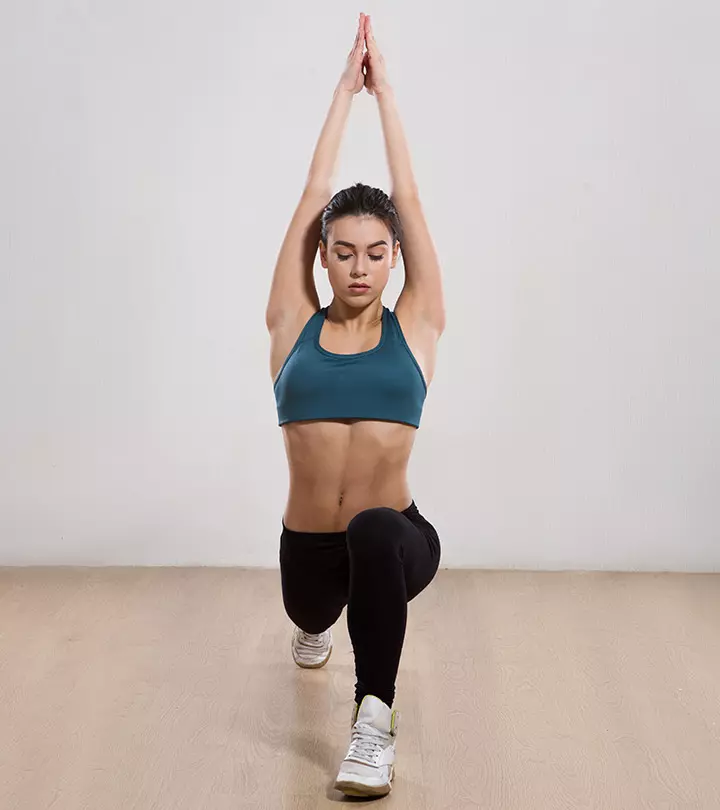









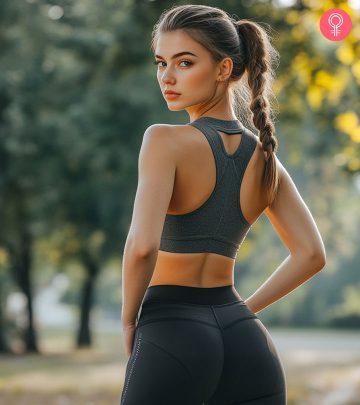


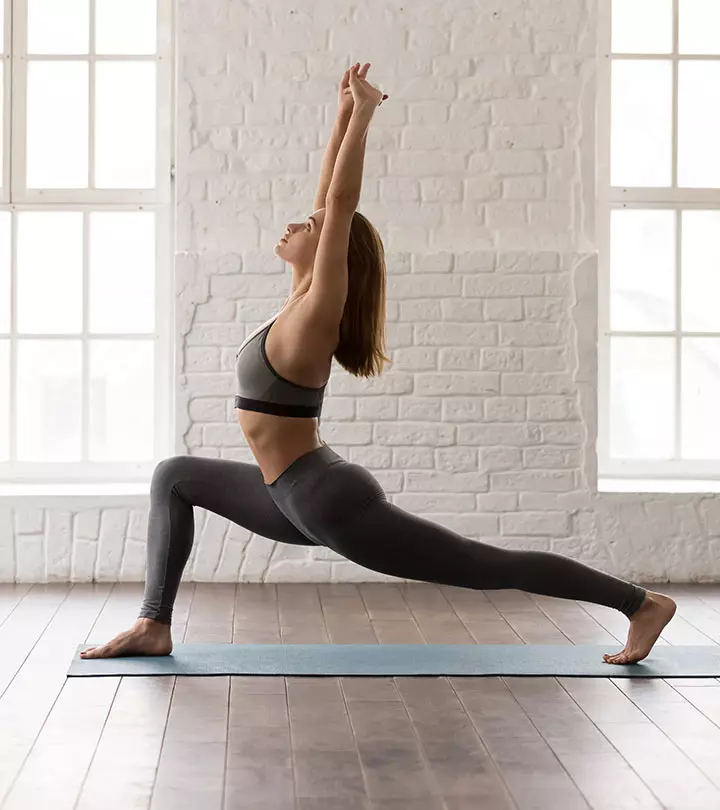

Community Experiences
Join the conversation and become a part of our empowering community! Share your stories, experiences, and insights to connect with other beauty, lifestyle, and health enthusiasts.